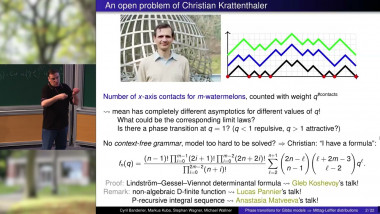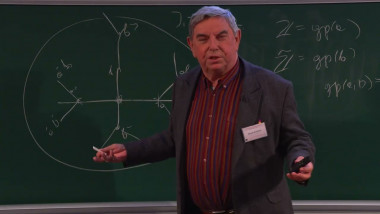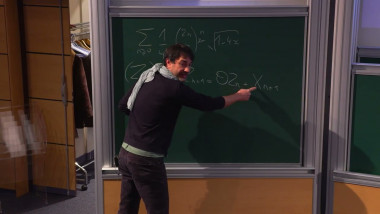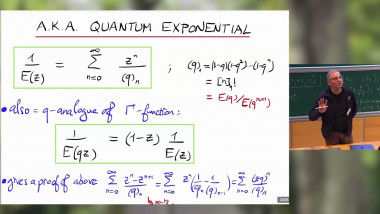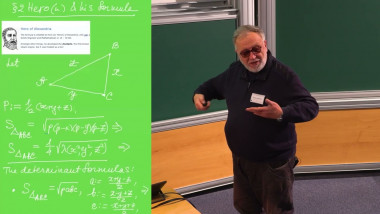Appears in collections : Research School, Jean-Morlet Chair - Doctoral school: Random structures in statistical mechanics and mathematical physics / Chaire Jean-Morlet - Ecole doctorale : Structures aléatoires en mécanique statistique et physique mathématique
In these lectures I will present the recent construction of the KPZ fixed point, which is the scaling invariant Markov process conjectured to arise as the universal scaling limit of all models in the KPZ universality class, and which contains all the fluctuation behavior seen in the class.
In the first part of the minicourse I will describe this process and how it arises from a particular microscopic model, the totally asymmetric exclusion process (TASEP). Then I will present a Fredholm determinant formula for its distribution (at a fixed time) and show how all the main properties of the fixed point (including the Markov property, space and time regularity, symmetries and scaling invariance, and variational formulas) can be derived from the formula and the construction, and also how the formula reproduces known self-similar solutions such as the $Airy_1andAiry_2$ processes.
The second part of the course will be devoted to explaining how the KPZ fixed point can be computed starting from TASEP. The method is based on solving, for any initial condition, the biorthogonal ensemble representation for TASEP found by Sasamoto '05 and Borodin-Ferrari-Prähofer-Sasamoto '07. The resulting kernel involves transition probabilities of a random walk forced to hit a curve defined by the initial data, and in the KPZ 1:2:3 scaling limit the formula leads in a transparent way to a Fredholm determinant formula given in terms of analogous kernels based on Brownian motion.
Based on joint work with K. Matetski and J. Quastel.
